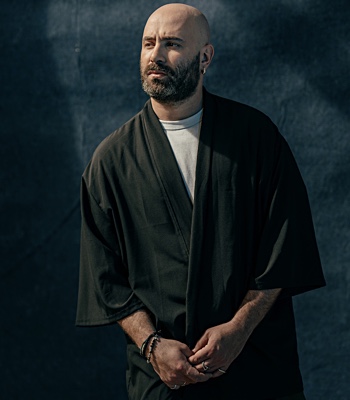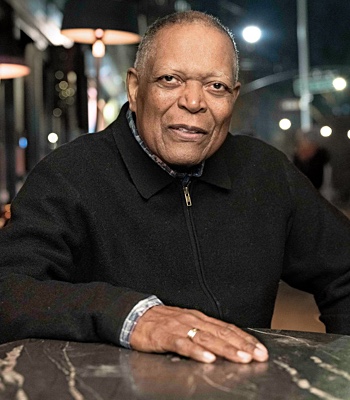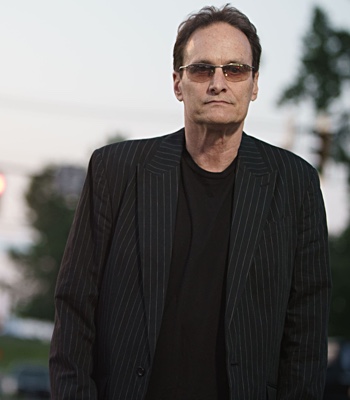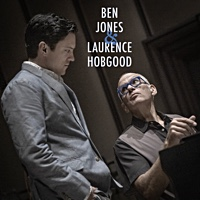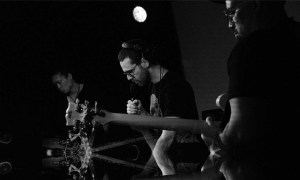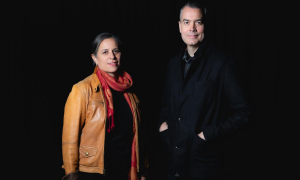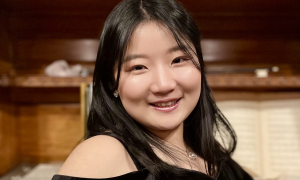
Graphic panels in the base add elements of black history
When Baltimore sculptor James Earl Reid created the city's first memorial to the stunningly gifted jazz singer Billie Holiday in 1985, something was missing. Gone were the panels containing references to the Jim Crow era and the lynching that Holiday so chillingly recounted in the ballad “Strange Fruit."
Now Reid has a chance to remedy what he calls censorship by city officials, by adding the bronze panels for today's rededication of the statue on the 50th anniversary of her death.
The striking, 8-foot-6-inch-high, 1,200-pound likeness of the Baltimore-born Holiday, wearing a strapless gown, with her trademark gardenias in her hair and her mouth open in song, will now rest on a 20,000-pound base of solid granite, as Reid had intended all along.
“Because of a rush to judgment on the city's part," said Reid, who skipped the 1985 dedication ceremony, “they put the statue on a two-tier cement pedestal, not a six-foot-high granite pedestal, as per my design, that would have housed these panels. Both are very significant to me and to Billie Holiday. She gave such a rich credibility to the experiences of black people and the black artist."
One panel depicts a black man who has been lynched. Another design element, showing a crow eating a gardenia, “represents the Jim Crow racism that ate the spirit of black people, including Billie Holiday," Reid said. “This is a reality that people of color had to face, and it hasn't ended. I'm trying to address this as an artist. It is my responsibility as an artist."
News accounts refer to considerable delay in getting any kind of Holiday memorial to fruition. Eventually the statue was planned for a plaza at the corner of Pennsylvania and W. Lafayette avenues, near the site of the Royal Theatre, where Holiday often performed. She died at the age of 44.
The dedication of the $113,000 statue, presided over by then-Mayor William Donald Schaefer and attended by more than 200 people, took place 14 years after the first proposal for a monument and eight years after Reid was hired for the project. Along the way, there was a dispute between the city and the artist over his fee and the cost for final bronzing of the statue.
The sculptor blames the city for blocking the inclusion of the panels, with their provocative elements. “There was clear evidence of censorship," he says. A newspaper report on the dedication noted that the panels were missing, but did not explain why.
When Baltimore sculptor James Earl Reid created the city's first memorial to the stunningly gifted jazz singer Billie Holiday in 1985, something was missing. Gone were the panels containing references to the Jim Crow era and the lynching that Holiday so chillingly recounted in the ballad “Strange Fruit."
Now Reid has a chance to remedy what he calls censorship by city officials, by adding the bronze panels for today's rededication of the statue on the 50th anniversary of her death.
The striking, 8-foot-6-inch-high, 1,200-pound likeness of the Baltimore-born Holiday, wearing a strapless gown, with her trademark gardenias in her hair and her mouth open in song, will now rest on a 20,000-pound base of solid granite, as Reid had intended all along.
“Because of a rush to judgment on the city's part," said Reid, who skipped the 1985 dedication ceremony, “they put the statue on a two-tier cement pedestal, not a six-foot-high granite pedestal, as per my design, that would have housed these panels. Both are very significant to me and to Billie Holiday. She gave such a rich credibility to the experiences of black people and the black artist."
One panel depicts a black man who has been lynched. Another design element, showing a crow eating a gardenia, “represents the Jim Crow racism that ate the spirit of black people, including Billie Holiday," Reid said. “This is a reality that people of color had to face, and it hasn't ended. I'm trying to address this as an artist. It is my responsibility as an artist."
News accounts refer to considerable delay in getting any kind of Holiday memorial to fruition. Eventually the statue was planned for a plaza at the corner of Pennsylvania and W. Lafayette avenues, near the site of the Royal Theatre, where Holiday often performed. She died at the age of 44.
The dedication of the $113,000 statue, presided over by then-Mayor William Donald Schaefer and attended by more than 200 people, took place 14 years after the first proposal for a monument and eight years after Reid was hired for the project. Along the way, there was a dispute between the city and the artist over his fee and the cost for final bronzing of the statue.
The sculptor blames the city for blocking the inclusion of the panels, with their provocative elements. “There was clear evidence of censorship," he says. A newspaper report on the dedication noted that the panels were missing, but did not explain why.
Photo Credit
AP Photo/Rob Carr
For more information contact All About Jazz.



